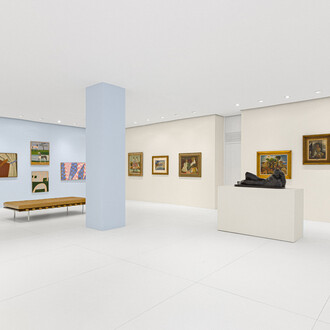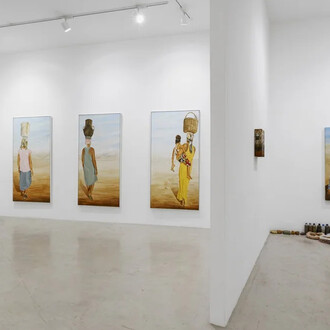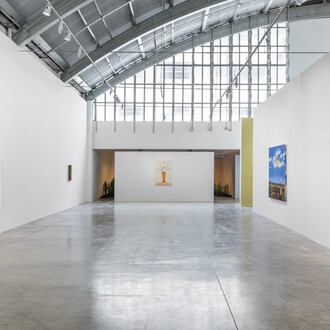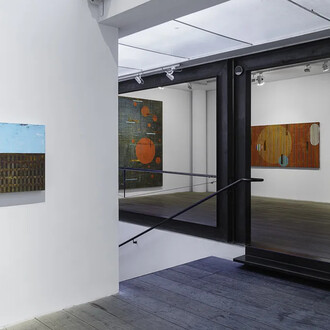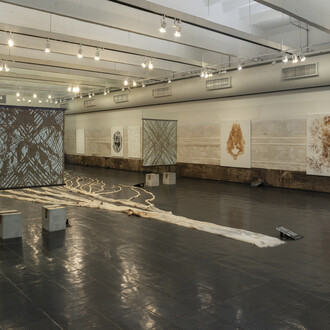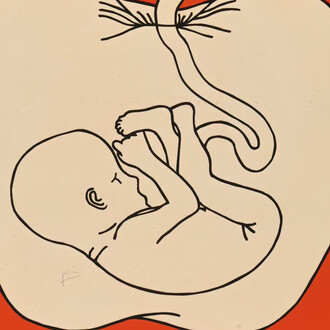The crux of overcoming capitalism has never been the class struggle, but the logic of the commodity. This is where all the power of capital lies. At the starting point of the multiple conceptual strategies in the late 1950’s and throughout the 1960’s, a common ground between them was moving beyond the work of art as an object, which was then becoming more and more of a commodity. It was already apparent that the exhibition of a work of art tended to be a means of turning it into a product for sale, with an entire marketing structure contextualizing it, not only by non-symbolic but also monetary value to the product which, in this case, was Art as merchandise. Hence the desire to dematerialize the object – the work of art as a form of direct communication with a minimum loss of information during this exchange. From the formal point of view of production and distribution, whether in major hegemonic centers of art production or in the periphery of the Third World, this is a point in common. But it ends there.
In the many Latin Americas that make up Latin America, other forces permeated the new way of producing art, each one existing within specific local contexts, but also having broader intentions. If, on the one hand, the political, historical and linguistic contexts of each region defined a territory of struggle and emancipation from its colonial past, on the other hand, colonialism itself and the exploitation by the imposed transnational capitalist system pushed in the direction of a common experience of resistance. A tendency toward the collective versus the individual artist; an incessant search for direct insertion without going through pre-established institutional or marketing means; and a new pedagogy where the work of art is considered a means of raising awareness and an instrument of emancipation for overcoming the political oppression of a patriarchal and authoritarian culture, as well as the means of economic reproduction – all this permeated the conceptual production in the region in that period.
Given this context, the irony is not lost on me of now proposing an exhibition of art from that time period in a commercial art gallery. Overcoming capitalism’s logic of commodity has once more proven to be a very difficult, if not an utopian, task. However, with liberalism flirting more and more with authoritarianism since the 2008 crisis, it is precisely in the production strategies of that time where we may perhaps find new forms of resistance. But how can we do this in an art gallery?
“Estratégias Conceituais” [Conceptual Strategies] does not intend to provide a historical overview, much less define clear and static genealogies. The gallery itself is not large enough to handle the vast and contradictory material that is in fact essentially experimental. The exhibition proposes, instead, to intentionally veer towards excess. There are more than 40 artists represented by over 80 works. They reflect production and dissemination strategies, sometimes of opposing ideological nuances. The exhibition will be the result of their confrontation with the exhibition space of a commercial art gallery in the early 21st Century. The excess in the presentation contaminates the objects that today tend to transform themselves into merchandise ready to be put into circulation. It is an insertion experiment.
List of artists: 3NÓS3, Adolfo Bernal, Anna Bella Geiger, Anna Maria Maiolino, Antonio Caro, Antonio Dias, Antonio Manuel, Artur Barrio, Augusto de Campos, Beatriz González, Bené Fonteles, Carlos Zilio, Cildo Meireles, Clemente Padín, Edgardo Antonio Vigo, Eugenio Dittborn, Graciela Carnevale, Guillermo Deisler, Hélio Oiticica, Hudinilson Jr., Ivens Machado, Jac Leirner, Jorge Caraballo, Julio Plaza, Lenora de Barros, León Ferrari, Letícia Parente, Liliana Porter, Lotty Rosenfeld, Luis Camnitzer, Luiz Alphonsus, Lygia Pape, Marcelo Brodsky, Mario Ishikawa, Montez Magno, Paulo Bruscky, Regina Silveira, Regina Vater, Roberto Jacoby, Umberto Costa Barros, Victor Gerhard, Victor Grippo, Waldemar Cordeiro and Waltercio Caldas.







![Bruno Munari (1907-1998)
Forchetta parlante, 1958-1991, Ed. 18/20
Garfo torcido sobre madeira
[Bent fork on wood]
15 x 7 x 3 cm [5 7/8 x 2 3/4 x 1 1/8 in.]](http://media.meer.com/attachments/582ae4ad2069da3df8b04376669e19755ef38c25/store/fill/330/330/fddfcc2bc266d3812450a83789a0c87812d6adba2c5fe72080b1c3b22654/Bruno-Munari-1907-1998-Forchetta-parlante-1958-1991-Ed-18-slash-20-Garfo-torcido-sobre-madeira.jpg)
![Bruce Conner (1933-2008)
BREAKAWAY, 1966
Filme 16mm em preto e branco
[Black and white 16mm film]
5 min
BC-0019
Courtesy: The Conner Family Trust, Kohn Gallery and Bergamin & Gomide](http://media.meer.com/attachments/7d07aa708db7f25e05333b5b262166f49883bfa7/store/fill/330/330/839c49e290870e0a9fe994df5e0c140d163ec7ca78a6019e5e8b269855f1/Bruce-Conner-1933-2008-BREAKAWAY-1966-Filme-16mm-em-preto-e-branco-Black-and-white-16mm-film-5.jpg)
